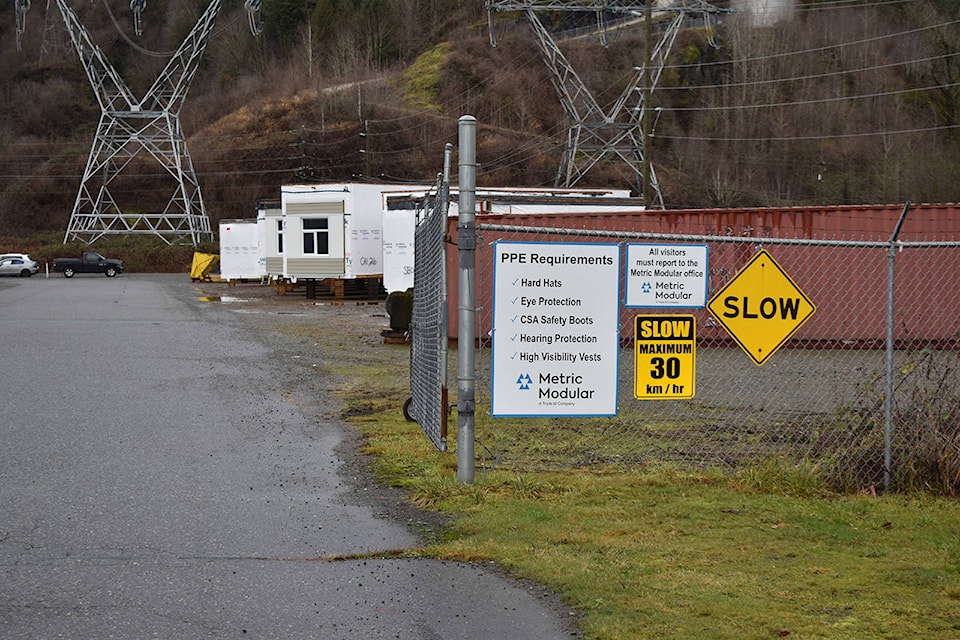Industrial land is in demand, but it doesn’t seem like the District of Kent will be able to up its supply to meet it.
During a special council meeting Monday (Feb. 11), the district received a report about the future of Kent’s industrial land as part of the district’s Industrial Strategy. This report looked at regional demand for land, as well as where the best spots in Kent were for future growth.
“Regionally, demand is shifting up the valley. Locally, there are indicators of business wanting to expand and smaller operators wanting to set up shop locally,” Justin Barer, land economics team lead at Urban Systems Ltd., said during council Monday.
According to Barer, municipalities across the Lower Mainland are looking at how they can maximize their industrial land to meet that demand.
“This entire region from an industrial stand point has been growing rapidly,” Barer said during council. “We have been in a sustained period of rapid growth, low vacancy and increasing land prices for all land uses, and industry is certainly no exception to that.”
Industry is a desirable land use for local government, as the taxes they bring in are often higher than commercial, residential and agricultural lands. But industry also requires a lot of space — something that has been shrinking significantly in recent years. Between 2010 and 2015, Metro Vancouver saw a net reduction of 350 hectares of industrial land.
“Under constant competition from other land uses that are often able to command higher prices … we have seen the conversion of industrial lands region-wide to other uses,” Barer explained.
Places like Richmond have been looking at how they can “intensify” their industrial lands — in Richmond’s case, that means finding out which industries offer the most employment opportunities and figuring out ways to bring more of those into the community.
RELATED: Agassiz industrial property values up 53 per cent
As part of the study in the District of Kent, Urban Systems Ltd. looked at where industrial lands were underutilized. Unlike Richmond, which is looking into employment possibilities, the study looked at lands that could be used for industry more generally.
In some parts of Kent, industrial land is on the rise: 12-lot light industrial subdivision is being considered on east Pioneer Avenue, and will be going to public hearing later in February. The study found that two properties on Evergreen Drive and Pioneer Avenue were being used for commercial businesses rather than industrial ones. There was one vacant lot near Cemetery Road, but it was likely too small to be put to good use by heavy industry.
But for the most part, potential industrial properties are maxed out, which means the District of Kent’s biggest problem is finding more land.
Less than one per cent of the land in Kent is designated industrial lands, compared to about 34 per cent of the land being in the Agricultural Land Reserve. In order for Kent’s industrial sector to grow, there needs to be more industrial lots — and that likely means taking those lands out of the ALR.
Getting lands out of the ALR for industrial purposes isn’t easy — the last time Barer remembers the ALC excluding a large block of agricultural lands for industry was in 2004.
RELATED: ALC decision protects Agassiz farmland
“There’s some uncertainty with where the ALC is going with how it may or may not treat ALC exclusion applications for industrial or other uses,” Barer said.
“(There has been) a history of some permissiveness that lead to non-ideal outcomes when they let lands out in the past.” This included the 2004 Abbotsford exclusion, which Barer said still had areas that were under-utilized or used for non-industrial purposes.
In Kent, Barer and his team identified a number of different areas that could be suitable for industrial land while not being good enough for the ALR. Only one made the cut on all scores: 12 properties on Cameron Road and McCallum Road.
After the presentation, council members had the option to make a request to the ALC to take 12 properties at Cameron Road and McCallum Road out of the ALR. Although that discussion was held in-camera, councillor Duane Post did say he felt it wouldn’t be worthwhile to make the application.
“The current flavour at the ALC is to not take any land out, and I think for us it wouldn’t be worthwhile trying to pursue it unless the property owners came along or we had some larger idea as to what was going to go in there,” he said. “Unfortunately, or fortunately, it depends how you look at it, that’s kind of the way it is now.”
In the future, it’s possible the District of Kent could court agro-industrial companies — ones that process, manufacture or package food. These kinds of industries may be allowed on ALR land, as they are connected to food production. They also might not be allowed.
“Research is finding clustered agro-industrial is useful as a measure to protect agricultural land and increase the efficiency of agriculture,” Barer said. “But moving forward in this vein would definitely require significant ongoing discussions with other partner municipalities and the ALC to start coming to joint definitions of agro-industrial: what it is, what it isn’t and how to monitor its use.”
Mayor Sylvia Pranger agreed.
“One of the big issues for me is defining what an agricultural industry is,” she said. “Until we have that definition, you can go anywhere from Molsons to Saputo producing cheese.”
grace.kennedy@ahobserver.com
Like us on Facebook and follow us on Twitter
